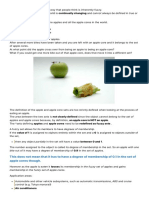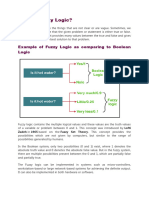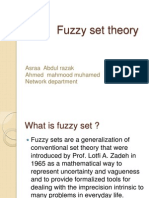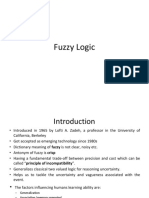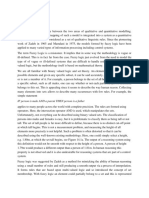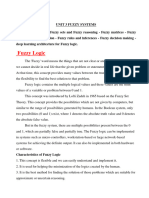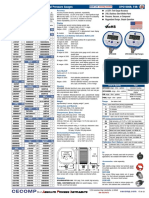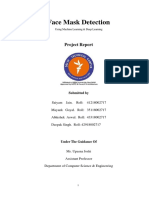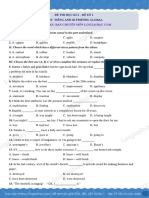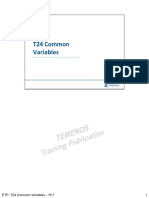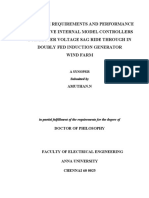0% found this document useful (0 votes)
40 views14 pagesFuzzy Logic: Concepts & Operations
This document provides an overview of fuzzy logic and fuzzy sets. It discusses key concepts such as:
1) Fuzzy logic allows for partial truth values between "true" and "false", modeling imprecise data.
2) Fuzzy sets use membership functions that assign a value between 0 and 1 to indicate the degree an element belongs to a set.
3) Common fuzzy set operations include union, intersection, and complement. Fuzzy relations relate elements between sets and can be represented using fuzzy matrices.
Uploaded by
kumararjun42049Copyright
© © All Rights Reserved
We take content rights seriously. If you suspect this is your content, claim it here.
Available Formats
Download as PDF, TXT or read online on Scribd
0% found this document useful (0 votes)
40 views14 pagesFuzzy Logic: Concepts & Operations
This document provides an overview of fuzzy logic and fuzzy sets. It discusses key concepts such as:
1) Fuzzy logic allows for partial truth values between "true" and "false", modeling imprecise data.
2) Fuzzy sets use membership functions that assign a value between 0 and 1 to indicate the degree an element belongs to a set.
3) Common fuzzy set operations include union, intersection, and complement. Fuzzy relations relate elements between sets and can be represented using fuzzy matrices.
Uploaded by
kumararjun42049Copyright
© © All Rights Reserved
We take content rights seriously. If you suspect this is your content, claim it here.
Available Formats
Download as PDF, TXT or read online on Scribd
/ 14




